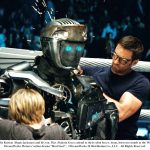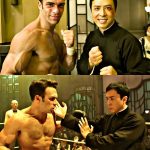Beetlejuice 3 (2025)
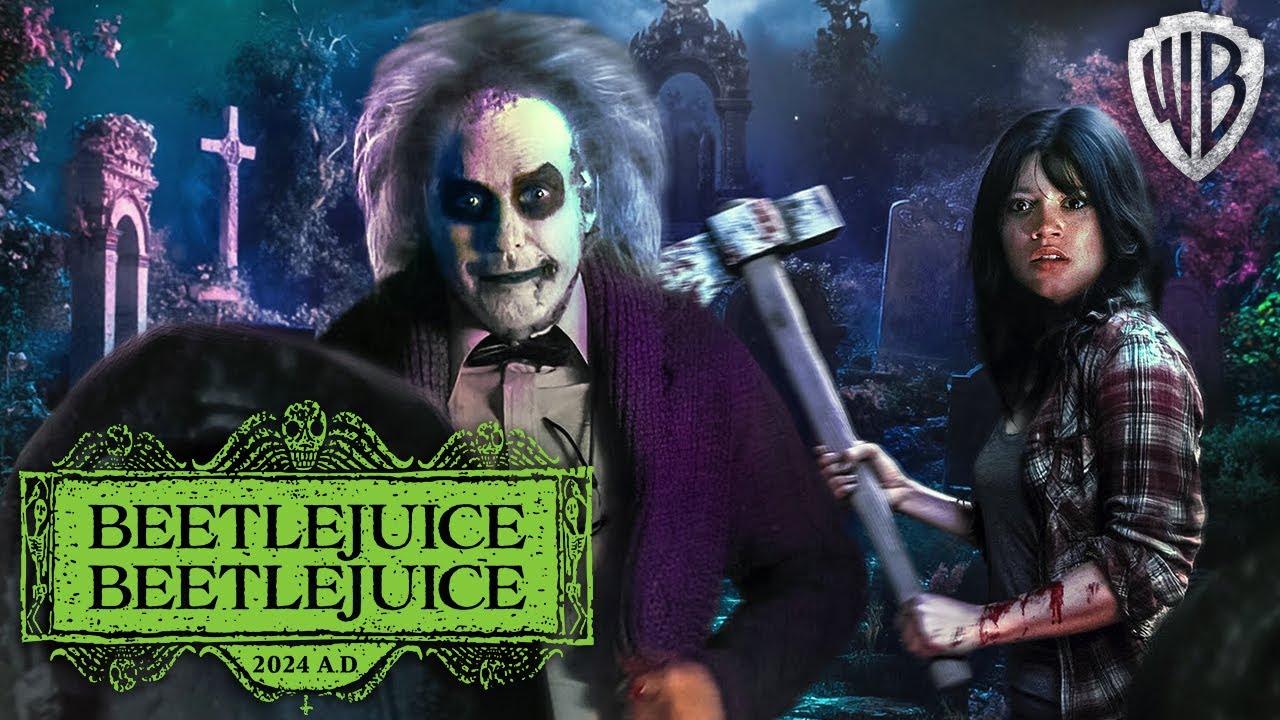
Beetlejuice 3 (2025)
Beetlejuice 3 (2025) returns to the wildly imaginative and darkly comedic world that made the franchise a cultural phenomenon. Directed once again under the signature vision of Tim Burton, the film brings audiences back to a realm where the boundaries between the living and the dead are as fragile as they are chaotic. The story reintroduces the mischievous and unpredictable Beetlejuice, played by Michael Keaton, who reprises the role that made him an icon of both horror and comedy. In this latest installment, the narrative expands the universe of the afterlife while exploring themes of control, chaos, family, and the strange allure of the supernatural.
The film opens in a picturesque yet eerily quiet suburban neighborhood, with a perfect façade of tranquility that conceals bizarre occurrences lurking just beneath the surface. This suburban calm is shattered when two kind, well-meaning spirits, struggling to maintain order in their own posthumous home, find themselves overwhelmed by supernatural chaos they cannot contain. The spirits’ frustration and desperation become the catalyst for the reemergence of Beetlejuice, whose reputation as a chaotic, mercurial, and almost impossibly cunning ghost precedes him. As soon as his name is uttered three times, the air seems to warp, reality bends, and the ordinary laws of physics and common sense dissolve into madness.
Michael Keaton’s performance as Beetlejuice is nothing short of electrifying. He embodies every aspect of the character that audiences have loved for decades: manic energy, sharp wit, irreverent humor, and an anarchic unpredictability that makes him both frightening and hilarious. In this installment, Keaton pushes the character into new territories, introducing fresh pranks, elaborate schemes, and theatrical disruptions that wreak havoc on both the living and the dead. Every scene with Beetlejuice crackles with energy, whether he is manipulating the afterlife bureaucracy, tormenting unsuspecting mortals, or dueling with rival ghosts who attempt to assert authority over him.
Tim Burton’s direction continues to define the visual identity of the Beetlejuice universe. The afterlife is rendered with all the hallucinatory, gothic whimsy fans expect: twisting corridors that defy logic, color schemes that oscillate between vibrant surrealism and shadowed menace, and architectural designs that seem to breathe with a life of their own. Burton’s eye for detail ensures that each environment is both mesmerizing and unsettling, drawing viewers into a world that is unpredictable, chaotic, and full of hidden surprises. Practical effects, CGI, and stop-motion animation are combined seamlessly, creating a visual spectacle that feels simultaneously tangible and dreamlike.
The narrative centers on the clash between order and chaos. The two spirits who initially summon Beetlejuice are faced with the consequences of their own inability to manage their afterlife domain. They represent the well-intentioned, conscientious side of the supernatural world, attempting to maintain balance, peace, and decorum. Their struggles provide the emotional backbone of the story, grounding the chaos in relatable human (or spectral) concerns. The contrast between these disciplined spirits and Beetlejuice’s anarchic personality creates both tension and comedic gold.
As Beetlejuice manipulates events, the storyline expands to include a host of new and returning characters. Specters of various shapes, sizes, and temperaments populate the afterlife bureaucracy, each with their own rules, quirks, and hidden agendas. Some are allies, while others view Beetlejuice as a threat to the delicate balance of the underworld. The interactions between these entities are both absurd and inventive, incorporating Burton’s darkly comedic sensibilities with moments of genuine tension. Ghostly bureaucrats bicker over forms, haunted hallways come alive with mischief, and spectral creatures manifest in imaginative, unsettling, and occasionally grotesque ways, adding depth and texture to the world-building.
Humor in Beetlejuice 3 ranges from slapstick to darkly witty, often arriving when the audience least expects it. Beetlejuice thrives on chaos, and the film indulges him, creating scenarios where logic and convention are turned on their heads. Mortals and spirits alike are subjected to elaborate pranks, chaotic transformations, and the occasional terrifyingly clever trap. Yet amid the mayhem, there are moments of heart and reflection. The film explores the loneliness and desires of its ghostly characters, the regrets they carry from their mortal lives, and their longing for connection, recognition, or closure. These emotional undertones give the narrative depth and balance the relentless chaos with surprisingly poignant moments.
Visually, the film is a tour de force. Burton’s set design emphasizes contrasts: vibrant, gaudy colors punctuate scenes of destruction, while muted, shadowed corners hide secrets, tricks, and ghostly whispers. Transformations and spectral manifestations are crafted to astonish, often blending humor with horror in ways that are uniquely Burton. For example, a perfectly ordinary suburban living room may suddenly stretch into a twisted funhouse, complete with shifting gravity, walls that bend like paper, and furniture that comes alive to harass intruders. These sequences are both spectacular and narratively functional, emphasizing Beetlejuice’s power to warp reality and the fragility of the boundaries between life and death.
The story also explores the consequences of summoning forces beyond one’s control. The two kind spirits must grapple with the chaos unleashed by Beetlejuice, learning lessons about responsibility, humility, and the limits of their own influence. Their journey is both comedic and enlightening, offering a counterbalance to Beetlejuice’s anarchic tendencies. Audiences witness a progression in their understanding, empathy, and courage as they attempt to regain control over their home, confront Beetlejuice’s antics, and ultimately find ways to harness his energy for constructive purposes—or at least mitigate the destruction he causes.
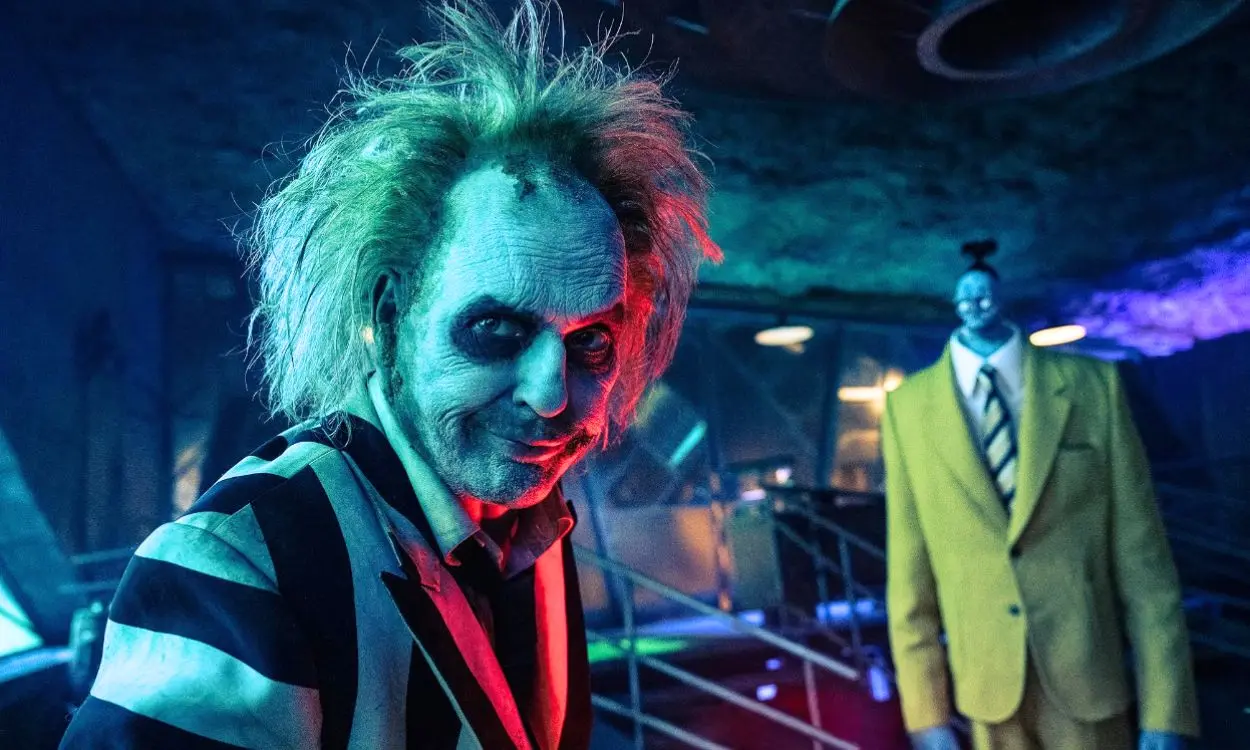
Michael Keaton’s Beetlejuice delivers not just comedy, but also commentary on the absurdity of life, death, and bureaucracy. His ability to oscillate between frightening, seductive, and ridiculous creates a character who is endlessly fascinating. Every line of dialogue is delivered with precision, every expression communicates intent, and every erratic movement reinforces his unpredictable nature. The film takes full advantage of Keaton’s comedic timing and physicality, turning even the smallest interaction into a spectacle of humor, tension, and brilliance.
Tim Burton’s signature style permeates every frame. The film embraces gothic elements, surreal landscapes, and idiosyncratic humor while grounding the chaos in relatable emotional stakes. Practical effects, makeup, and costumes are designed to evoke both nostalgia and novelty, with Beetlejuice’s appearance retaining its classic green-and-white-striped look while incorporating subtle updates that make him feel fresh and contemporary. The ghostly ensemble is equally imaginative, with a mix of classic spectral tropes and original creations, ensuring that the afterlife feels populated, alive, and endlessly unpredictable.
The pacing of Beetlejuice 3 is carefully structured to maintain suspense, humor, and narrative momentum. Early sequences establish the world, the rules of the afterlife, and the characters’ goals, while the midsection accelerates into a series of increasingly elaborate schemes, ghostly encounters, and chaotic set pieces. The climax delivers a combination of spectacle, clever strategy, and emotional resolution, bringing both the mortal and spectral storylines to satisfying conclusions. Even in the most frenetic sequences, the audience is never lost, as Burton balances visual complexity with narrative clarity.
Underlying all the humor and spectacle is a story about agency, chaos, and the nature of identity. Beetlejuice embodies freedom unbound by social norms, a force of pure unpredictability that challenges the rules, conventions, and authority figures of both the living and the dead. The human and ghostly characters are forced to confront their own limitations, confront moral and ethical dilemmas, and consider what control really means in a world where nothing is truly permanent. These philosophical undercurrents elevate the story beyond a simple comedy, allowing it to explore deeper themes of autonomy, consequence, and the meaning of life and death.
The film also delivers moments of genuine emotional resonance. The two primary spirits, despite their well-meaning intentions, experience fear, vulnerability, and uncertainty. Their interactions with Beetlejuice are not merely adversarial; they are opportunities for growth, self-discovery, and learning to navigate a world that is unpredictable, magical, and at times, terrifying. The balance of chaos and emotion ensures that the audience remains invested in the characters, rooting for them even as Beetlejuice upends their carefully constructed reality.
Sound design and score are integral to the experience, complementing Burton’s visual style and Keaton’s performance. Music shifts fluidly between whimsical, eerie, and dramatic, reinforcing both comedic beats and moments of tension. Sound effects highlight the fantastical transformations, spectral appearances, and chaotic antics, immersing the audience fully in the unpredictable world. From creaking doors to sudden spectral eruptions, the auditory experience mirrors the visual unpredictability, enhancing the sense of living inside a Burtonian dreamscape.
Beetlejuice 3 ultimately succeeds in honoring the legacy of the original films while expanding the universe in imaginative and exciting ways. Longtime fans will appreciate the nods to the original story, character continuity, and the irreverent humor that made Beetlejuice an icon. At the same time, the new narrative, characters, and visual innovations make the film accessible and thrilling for a new generation of viewers. The blend of dark comedy, horror elements, and imaginative world-building ensures a multi-layered experience, one that entertains, surprises, and delights from start to finish.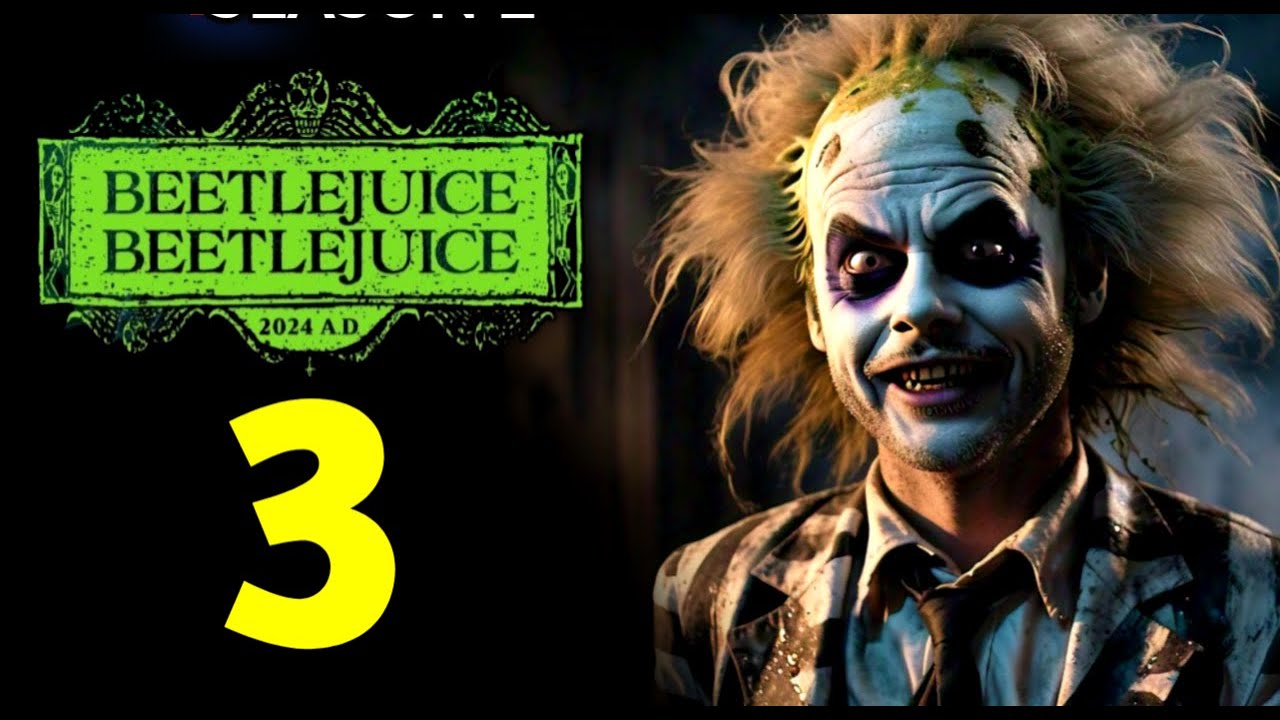
In conclusion, Beetlejuice 3 (2025) is a masterclass in dark comedy, chaotic storytelling, and cinematic imagination. It combines Michael Keaton’s unforgettable performance, Tim Burton’s visionary direction, and a richly textured narrative to create a film that is both wildly entertaining and emotionally engaging. Audiences are invited to embrace the madness, witness the unpredictability of the afterlife, and experience a world where rules are made to be broken and chaos is king. The ghost with the most returns, louder, funnier, and more brilliant than ever, reminding everyone why saying his name three times is an adventure in itself.



